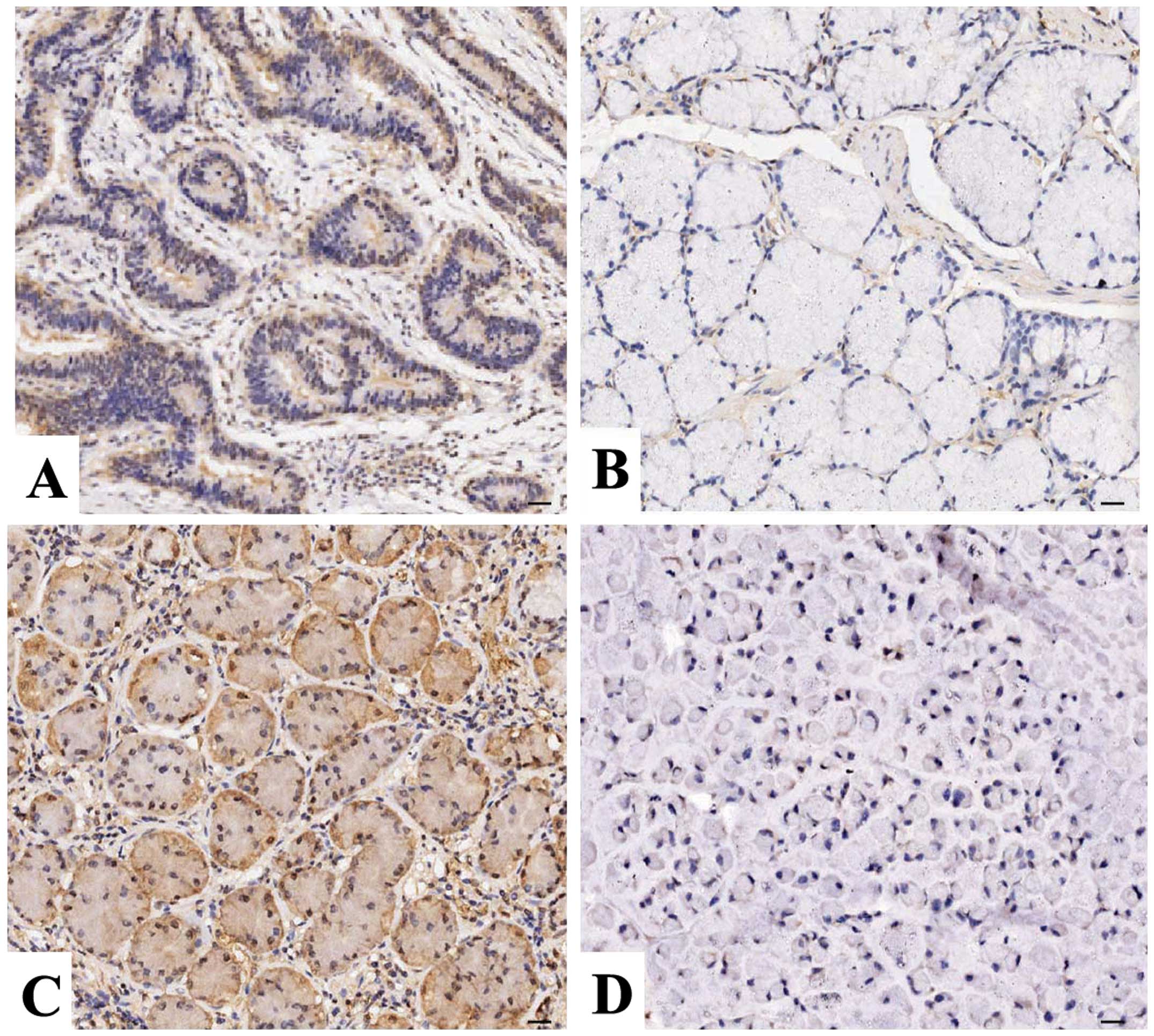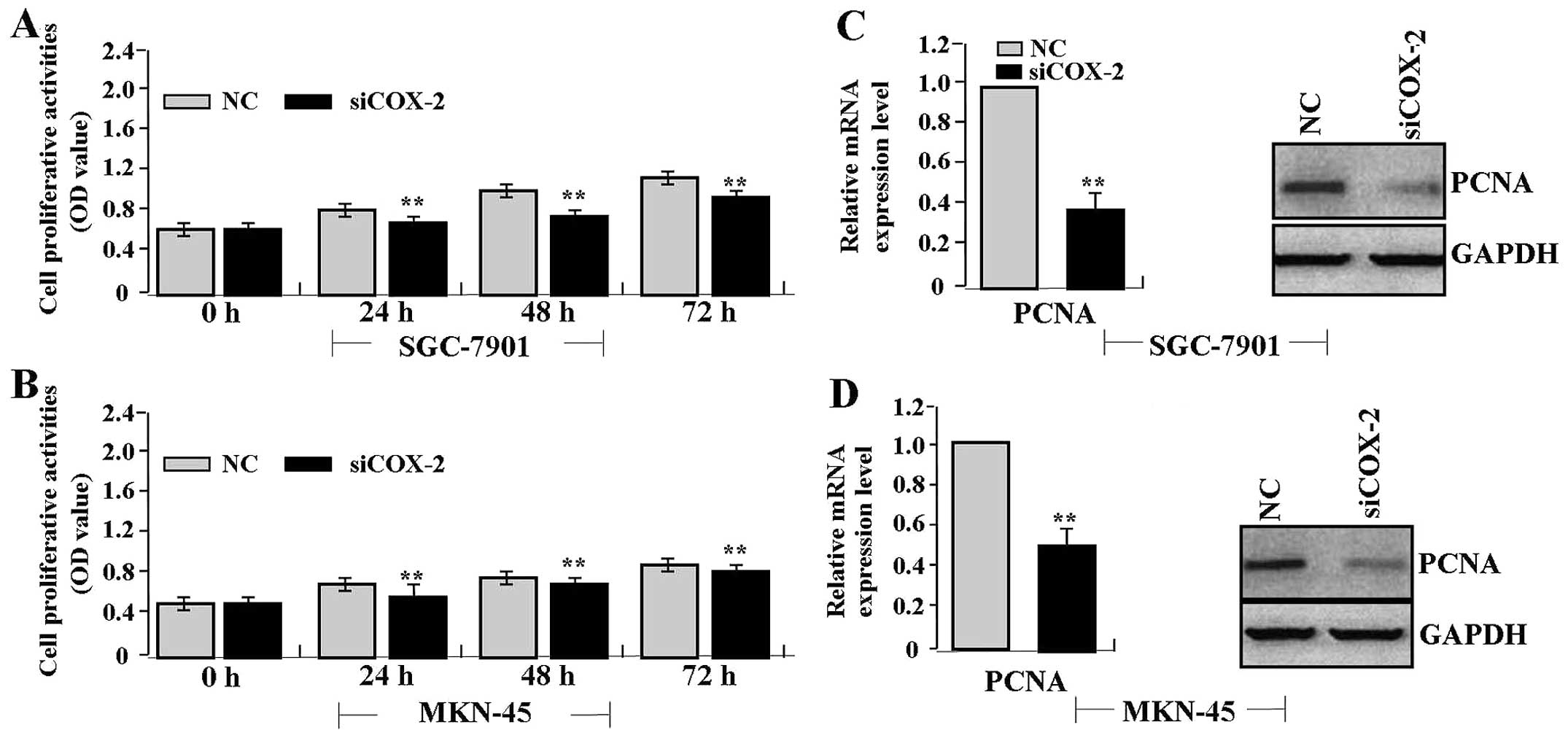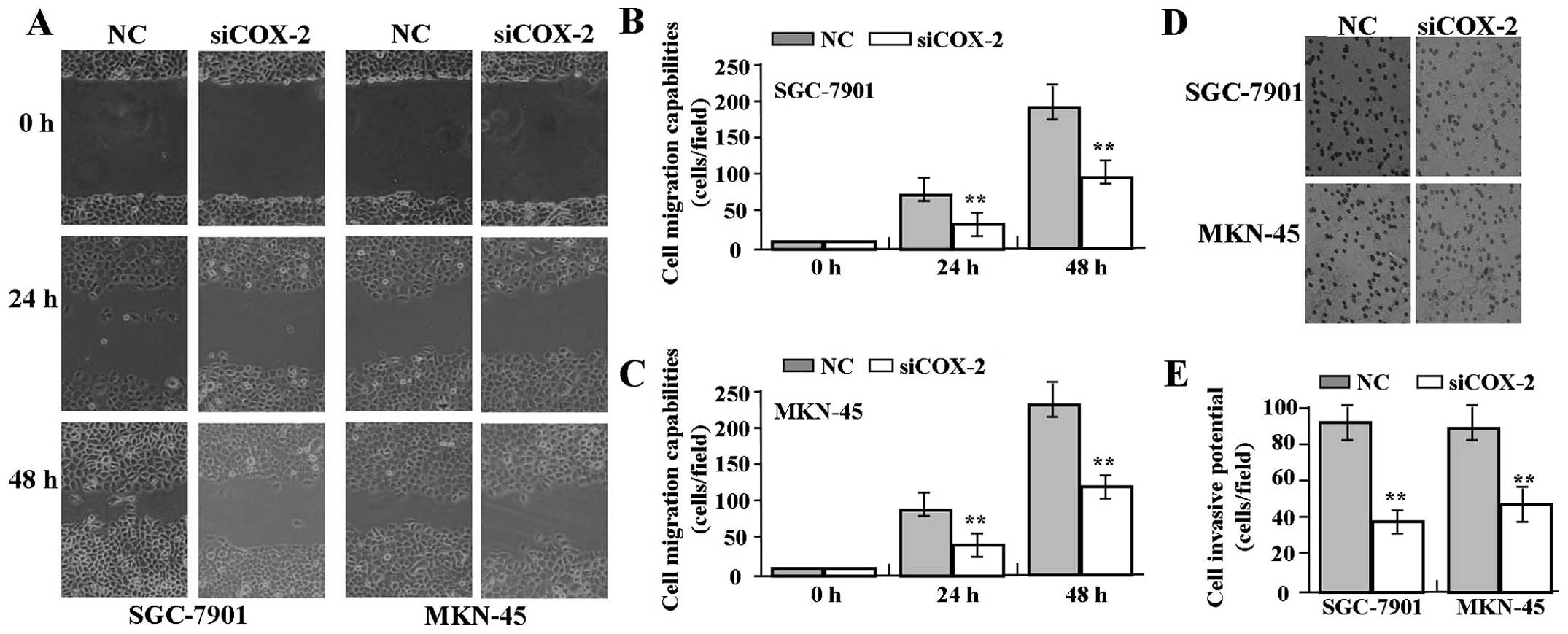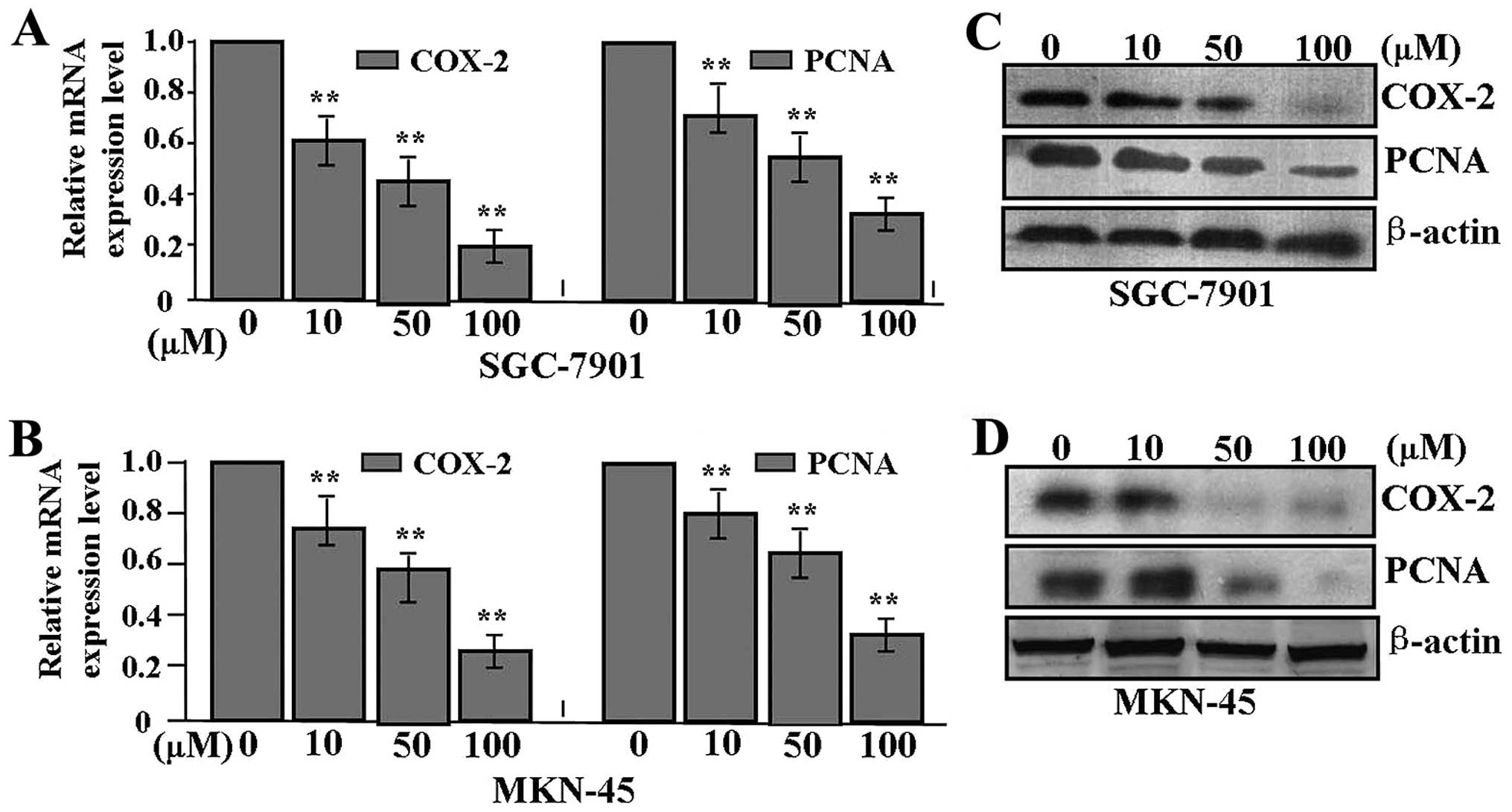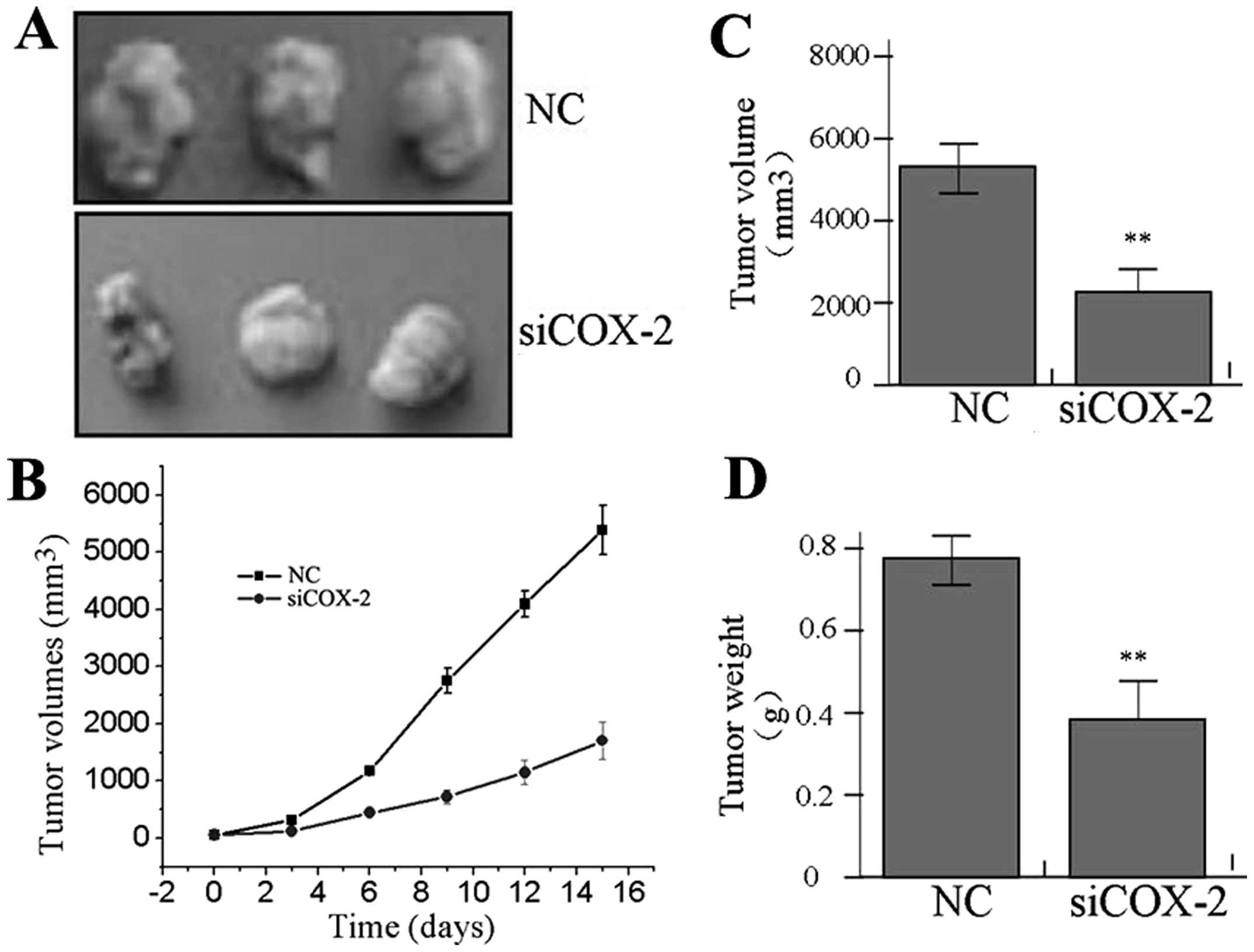|
1
|
Parkin DM, Bray F, Ferlay J, et al: Global
cancer statistics, 2002. CA Cancer J Clin. 55:74–108. 2005.
View Article : Google Scholar
|
|
2
|
Tong QS, Zheng LD, Wang L, et al:
Downregulation of XIAP expression induces apoptosis and enhances
chemotherapeutic sensitivity in human gastric cancer cells. Cancer
Gene Ther. 12:509–514. 2005.PubMed/NCBI
|
|
3
|
Saukkonen K, Rintahaka J, Sivula A, et al:
Cyclooxygenase-2 and gastric carcinogenesis. APMIS. 111:915–925.
2003. View Article : Google Scholar : PubMed/NCBI
|
|
4
|
Tatsuguchi A, Matsui K, Shinji Y, et al:
Cyclooxygenase-2 expression correlates with angiogenesis and
apoptosis in gastric cancer tissue. Hum Pathol. 35:488–495. 2004.
View Article : Google Scholar : PubMed/NCBI
|
|
5
|
Yasuda H, Yamada M, Endo Y, et al:
Elevated cyclooxygenase-2 expression in patients with early gastric
cancer in the gastric pylorus. J Gastroenterol. 40:690–697. 2005.
View Article : Google Scholar : PubMed/NCBI
|
|
6
|
Mrena J, Wiksten JP, Thiel A, et al:
Cyclooxygenase-2 is an independent prognostic factor in gastric
cancer and its expression is regulated by the messenger RNA
stability factor HuR. Clin Cancer Res. 11:7362–7368. 2005.
View Article : Google Scholar : PubMed/NCBI
|
|
7
|
Ji J, Zhao P and Huang B: Study of gastric
carcinoma and PCNA and c-met gene abnormality. Wei Sheng Yan Jiu.
37:479–482. 2008.(In Chinese).
|
|
8
|
Czyzewska J, Guzińska-Ustymowicz K, Lebelt
A, et al: Evaluation of proliferating markers Ki-67, PCNA in
gastric cancers. Rocz Akad Med Bialymst. 49:64–66. 2004.PubMed/NCBI
|
|
9
|
Czyzewska J, Guzińska-Ustymowicz K,
Pryczynicz A, et al: Immunohistochemical evaluation of Ki-67, PCNA
and MCM2 proteins proliferation index (PI) in advanced gastric
cancer. Folia Histochem Cytobiol. 47:289–296. 2009. View Article : Google Scholar : PubMed/NCBI
|
|
10
|
Lu B, Yu L, Xu L, et al: The effects of
radix curcumae extract on expressions of VEGF, COX-2 and PCNA in
gastric mucosa of rats fed with MNNG. Curr Pharm Biotechnol.
11:313–317. 2010. View Article : Google Scholar : PubMed/NCBI
|
|
11
|
Forones NM, Kawamura KY, Segreto HR, et
al: Expression of COX-2 in stomach carcinogenesis. J Gastrointest
Cancer. 39:4–10. 2008. View Article : Google Scholar : PubMed/NCBI
|
|
12
|
Sonoda R, Naomoto Y, Shirakawa Y, et al:
Preferential up-regulation of heparanase and cyclooxygenase-2 in
carcinogenesis of Barrett’s oesophagus and intestinal-type gastric
carcinoma. Histopathology. 57:90–100. 2010.PubMed/NCBI
|
|
13
|
Liu J, Yu HG, Yu JP, et al: Overexpression
of cyclooxygenase-2 in gastric cancer correlates with the high
abundance of vascular endothelial growth factor-C and lymphatic
metastasis. Med Oncol. 22:389–397. 2005. View Article : Google Scholar : PubMed/NCBI
|
|
14
|
Gou HF, Chen XC, Zhu J, et al: Expressions
of COX-2 and VEGF-C in gastric cancer: correlations with
lymphangiogenesis and prognostic implications. J Exp Clin Cancer
Res. 30:142011. View Article : Google Scholar : PubMed/NCBI
|
|
15
|
Yamac D, Ayyildiz T, Coşkun U, et al:
Cyclooxygenase-2 expression and its association with angiogenesis,
Helicobacter pylori, and clinicopathologic characteristics
of gastric carcinoma. Pathol Res Pract. 204:527–536. 2008.
View Article : Google Scholar : PubMed/NCBI
|
|
16
|
Zhang J, Zhang QY, Fu YC, et al:
Expression of p-Akt and COX-2 in gastric adenocarcinomas and
adenovirus mediated Akt1 and COX-2 ShRNA suppresses SGC-7901
gastric adenocarcinoma and U251 glioma cell growth in vitro and in
vivo. Technol Cancer Res Treat. 8:467–478. 2009. View Article : Google Scholar : PubMed/NCBI
|
|
17
|
Chan MW, Wong CY, Cheng AS, et al:
Targeted inhibition of COX-2 expression by RNA interference
suppresses tumor growth and potentiates chemosensitivity to
cisplatin in human gastric cancer cells. Oncol Rep. 18:1557–1562.
2007.PubMed/NCBI
|
|
18
|
Jiménez P, García A, Santander S and
Piazuelo E: Prevention of cancer in the upper gastrointestinal
tract with COX-inhibition. Still an option? Curr Pharm Des.
13:2261–2273. 2007.PubMed/NCBI
|
|
19
|
Hu PJ, Yu J, Zeng ZR, et al:
Chemoprevention of gastric cancer by celecoxib in rats. Gut.
53:195–200. 2004. View Article : Google Scholar : PubMed/NCBI
|
|
20
|
Tang C, Liu C, Zhou X, et al: Enhanced
inhibitive effects of combination of rofecoxib and octreotide on
the growth of human gastric cancer. Int J Cancer. 112:470–474.
2004. View Article : Google Scholar : PubMed/NCBI
|
|
21
|
Tendo M, Yashiro M, Nakazawa K, et al: A
synergic inhibitory-effect of combination with selective
cyclooxygenase-2 inhibitor and S-1 on the peritoneal metastasis for
scirrhous gastric cancer cells. Cancer Lett. 244:247–251. 2006.
View Article : Google Scholar
|
|
22
|
Zhang X, Zhong R, Zhang Z, et al:
Interaction of cyclooxygenase-2 promoter polymorphisms with
Helicobacter pylori infection and risk of gastric cancer.
Mol Carcinog. 50:876–883. 2011. View
Article : Google Scholar : PubMed/NCBI
|
|
23
|
Sierra JC, Hobbs S, Chaturvedi R, et al:
Induction of COX-2 expression by Helicobacter pylori is
mediated by activation of epidermal growth factor receptor in
gastric epithelial cells. Am J Physiol Gastrointest Liver Physiol.
305:G196–G203. 2013.PubMed/NCBI
|
|
24
|
Lan C, Yang L, Fan L, et al: Celecoxib
inhibits Helicobacter pylori-induced invasion of gastric
cancer cells through an adenine nucleotide translocator-dependent
mechanism. Anticancer Agents Med Chem. 13:1267–1272.
2013.PubMed/NCBI
|
|
25
|
Kunimoto Y, Nakamura T, Ohno M, et al:
Relationship between immunohistochemical evaluation of thymidylate
synthase and proliferating cell nuclear antigen labeling index in
gastrointestinal carcinoma. Oncol Rep. 12:1163–1167. 2004.
|
|
26
|
Tao K, Chen D, Tian Y, et al: The
relationship between apoptosis and the expression of proliferating
cell nuclear antigen and the clinical stages in gastric carcinoma.
J Tongji Med Univ. 20:222–224. 2000. View Article : Google Scholar : PubMed/NCBI
|
|
27
|
Hall PA, Levison DA, Woods AL, et al:
Proliferating cell nuclear antigen (PCNA) immunolocalization in
paraffin sections: an index of cell proliferation with evidence of
deregulated expression in some neoplasms. J Pathol. 162:285–294.
1990. View Article : Google Scholar : PubMed/NCBI
|















